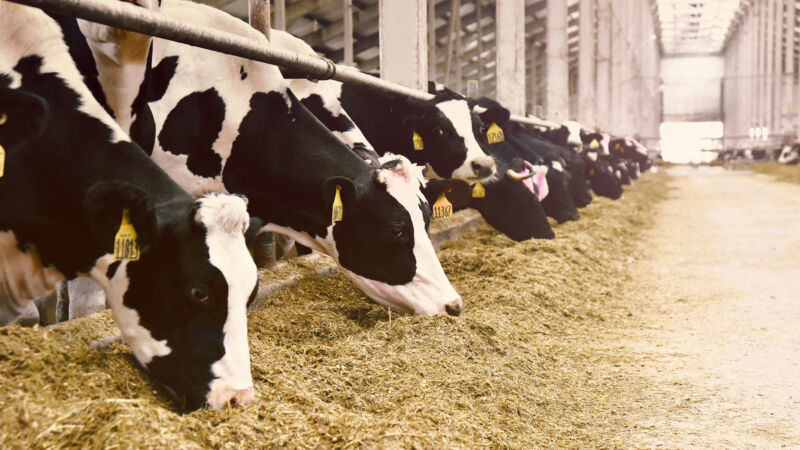
Enlarge (credit: Hans Meleman | Getty Images)
It’s an oppressively hot morning in the barnyard, even in the shade of the long open-air structure where the cows come to feed. On a typical farm, they would gather around a trough, but here at UC Davis they chow from special blue bins, which detect when and how much each one eats. It’s like Weight Watchers, only researchers here aren’t so much interested in these cows’ figures, but how much they burp.
Animal scientist Frank Mitloehner leads me to another kind of feeder, one that could easily be mistaken for a miniature wood chipper. He grabs a handful of the alfalfa pellets that the machine dispenses when it detects that a cow has poked its head in. “This is like candy to them,” Mitloehner says. I stick my head into the machine as Mitloehner points out a small metal tube within: “This probe measures the methane they exhale, and that happens every three hours for all the animals in this study.”
